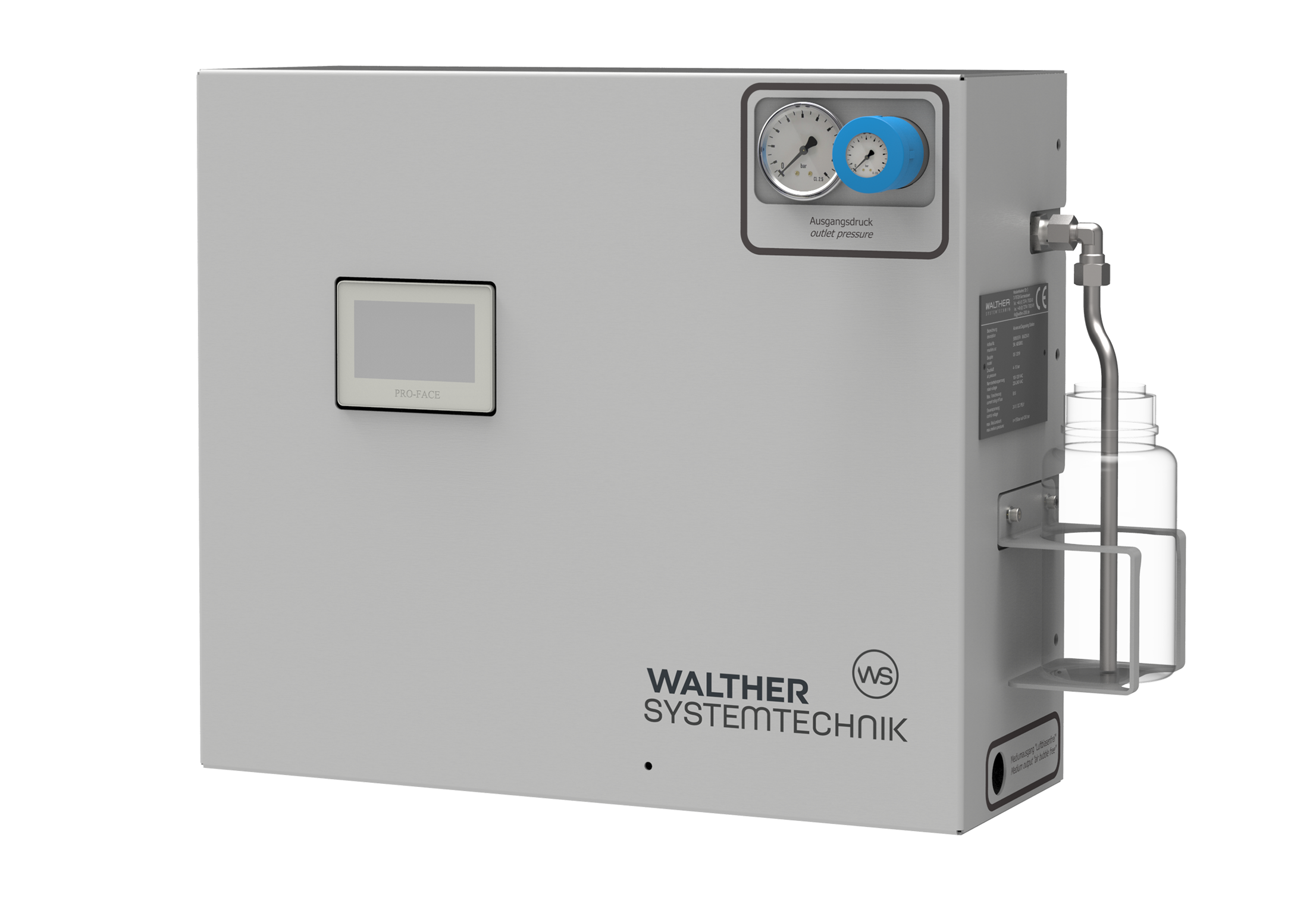Advanced Degassing Station WADS
The Walther Advanced Degassing Station (WADS-01) has been specifically designed for the degassing of lubricants in industrial dispensing applications. Gas inclusions compromise dispensing accuracy, lead to uneven application, and can damage dispensing valves and production equipment. The WADS-01 identifies and removes such inclusions precisely and efficiently.
Bubble Detection and Selective Degassing: The WADS-01 detects gas bubbles with a diameter of 1.3 mm or larger and actively extracts them. This precise degassing ensures consistent, homogeneous lubricant quality and reduces medium loss, a particular advantage when using high-value lubricants. By selectively removing bubbles, the quality of the medium remains stable, dispensing errors are minimized, and potential contamination is prevented.
Pressure Regulation and Pump Capacity: The WADS-01 operates at an input pressure of up to 150 bar and is equipped with a high-pressure pump with a 25:1 ratio, achieving an output pressure of up to 250 bar. This configuration enables the degassing of high-viscosity greases and ensures a uniform supply of lubricant, even under demanding conditions, making it ideal for industrial applications.
Continuous Supply via Storage Unit: An integrated storage unit ensures uninterrupted material supply, even during container changes or other material feed interruptions. This provides a constant medium flow and minimizes downtime.
Flexibility in Integration and Control: The WADS-01 is designed as a standalone component for integration into both new and existing process chains. An HMI control panel allows for intuitive on-site operation, while the Ethernet interface (Modbus-TCP protocol) enables integration into PLC-controlled systems. This flexible control option simplifies embedding into specific production environments.
Adjustable Operating Modes: The WADS-01 can be operated in either automatic or manual mode, depending on requirements. In automatic mode, the system operates autonomously, using predefined settings for consistent degassing performance. Manual mode offers “Direct Control,” providing full access to core parameters such as pressure release, storage emptying, and bubble extraction. Additionally, the sensitivity of bubble detection, extraction time, and storage unit fill volume can be individually adjusted to ensure optimal, demand-based lubricant preparation.
Process Monitoring and "Teaching" Mode: Continuous monitoring of the bubble count, bubble duration, extraction time, and storage fill level is supported by configurable digital outputs that issue alerts when defined thresholds are exceeded. The “Teaching” mode enables automatic adjustment of settings based on the medium's properties for automated operation.
With the WADS-01 Advanced Degassing Station, bubble-free and consistent lubricant preparation is achieved, ensuring constant quality and process reliability in demanding industrial dispensing applications.
- system can be easily integrated into existing fluid systems
- continuous detection and discharge of medium which is contaminated with air bubbles
- even smallest air bubbles will be detected and discharged
- simple and intuitive operation/direct parametering on operating panel (4,3“ Touch-Display) or via remote access through BUS system
- monitoring of process values with limit value definitions and reporting of limit value breaches
- process pressure (inlet): 20 to 150 [bar]
- process pressure (outlet): max. 200 [bar]
- middle volume flow: max. 100 [ccm/min]
- short-term volume flow: max. 1500 [ccm/min]
- duitable media: Lubricants up to NLGI 3 / 5000 [mPas]
- weight: 18,0 [kg]
- dimensions (l x w x h): 759 x 268 x 514 [mm]











